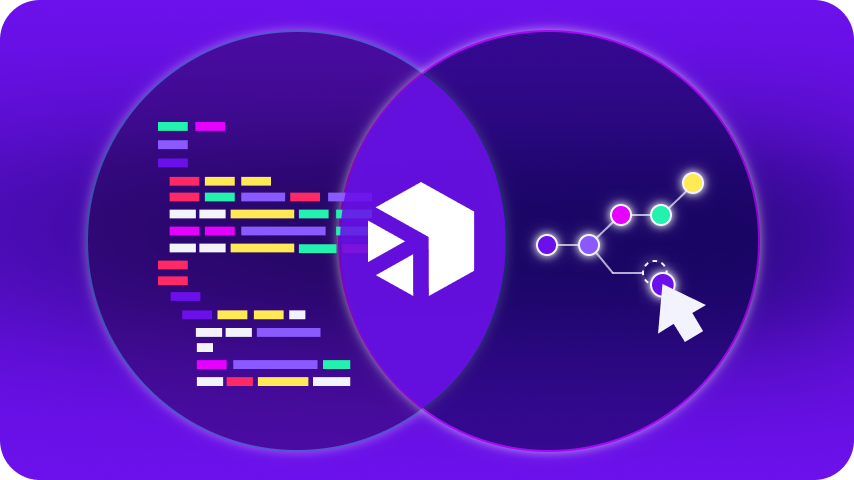July 6, 2023
Digital transformation and architecture modernization have become a top priority for organizations as the shift to omnichannel and digital-first strategies continues to accelerate. Integration plays a key role in this trend, and you’ve probably been bombarded with messaging on the importance of the right integration strategy.
Point-to-point integration, APIs, ESBs, iPaaS – the options can be confusing and differentiating between them can be difficult. The proliferation of “as-a-service” business models means iPaaS at least sounds slightly familiar. But what is an iPaaS anyway?

What is an iPaaS?
An iPaaS (integration platform-as-a-service) is a technological solution that uses cloud-based resources to connect disparate IT resources and systems. By design, iPaaS is platform-agnostic and can connect any combination of on-premise and cloud-based processes, applications, and data – within a single company or across organizations.
What does iPaaS solve?
An iPaaS lets organizations connect, secure and monitor systems that otherwise lack the ability to communicate and share data. This can help reduce costs, increase efficiency, and ultimately, deliver a better customer experience. For companies that need to modernize legacy architecture or connect siloed systems as part of a digital transformation, an iPaaS can be the key to connectivity without disruptions.
How Does an iPaaS Work?
Technology is continually evolving, and with it are the expectations and demands on businesses across verticals. But new tools aren’t always compatible with the systems you’ve used for years, and overhauling business-critical processes and replacing systems you’ve invested thousands (if not millions) of dollars in is not an option for most organizations.
An iPaaS lets you integrate data and processes consistently between the new tools your team needs to stay current and the older systems that are the lifeblood of your business. Your iPaaS provider supplies and maintains the platform on which you can build connections between disparate systems – most will also offer pre-built connectors and other tools aimed at simplifying the tasks of building, deploying, and maintaining these integrations.
What does that mean for your organization?
The most significant difference an iPaaS can make for your organization is the load it will take off your development team. Manually creating and maintaining connections between legacy systems and the ever-increasing number of digital tools your team uses can be a full-time job for even experienced developers, meaning all your IT resources are consumed by basic operations and none are left for innovation.
What Does an iPaaS Do?
There’s more to an iPaaS than simply moving data between systems and tools, although obviously data-sharing is a major part of the offering. In addition to simply transporting data, an iPaaS can also:
- Map data between applications to provide a comprehensive overview of data flows
- Transform data between applications and systems to allow tools with differing data formats to communicate without human intervention
- Monitor and improve data quality as appropriate
- Enforce policies to secure data against unauthorized access
The Benefits of an iPaaS
Even if your organization is not focused on modernization or transformation, there are a wide range of benefits an iPaaS can provide.
- Save time (and money)
Without an effective integration solution, even seemingly minor tasks can be relatively time-consuming as your staff access multiple systems to collect all the information they need to perform a task. With an iPaaS, data can be centralized, allowing users to view all the information they need in a single space.
- Reduce errors
Typos, oversights, and errors are a fact of life when data from disparate systems is combined manually. No matter how careful and skilled your employees are, mistakes will always creep in. An iPaaS mitigates that risk by transforming and integrating information automatically.
- Increase efficiency and productivity
When your team spends less time working to access and combine data across multiple systems, they can spend more time focused on innovation, business development, and delivering the best possible products or services. Your employees are happier, and your bottom line improves.
- Address issues faster
It can be difficult to spot problems in manually built point-to-point integrations – and even harder to fix them. An iPaaS provides a centralized view of your entire ecosystem, making it easy to identify and address issues with minimal disruption to daily operations.
- Improve customer experience with real-time insights
With customer data from every system and platform integrated in a single space, your organization can deliver a more personalized, efficient experience for customers based on when, where, and how they choose to interact with your business.
- Enhance agility and flexibility
The past few years have demonstrated how the ability to pivot and adapt quickly to changing circumstances can mean the difference between success and failure for businesses. A scalable iPaaS solution helps future-proof your business, so you’re ready for anything – good or bad.
Discover How Digibee Does iPaaS Differently
The benefits and use cases for an iPaaS are compelling – but not all iPaaS solutions are the same. While the power of some traditional iPaaS offerings lies in complex systems that require certified integration development experts to leverage, Digibee has built an iPaaS that empowers all solution architects and developers across your organization to build and deploy the integrations needed to keep your business growing. This democratizes the work across skilled technology pros without bogging down a handful of certified developers – enabling all to focus more on innovating and less on integrating.
Take the Digibee challenge to see how we do iPaaS better. Book a 15-minute discovery call, 30-minute custom demo, or 60-minute deep dive and see how easy integration can be.













